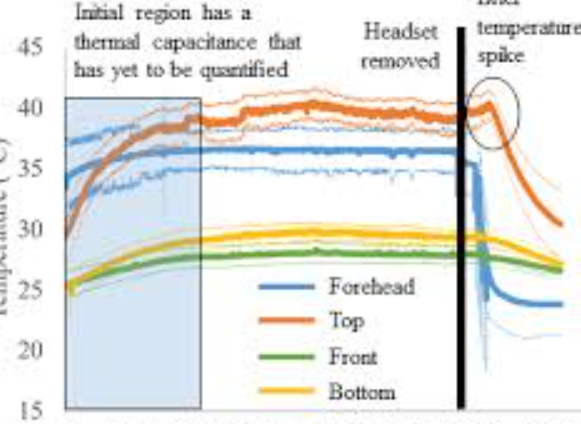Thermal Characterization of a Virtual Reality Headset during Transient and Resting Operation
PubDate: July 2020
Teams: Oregon State University
Writers: Rachel McAfee; Cole Haxton; Matthew Harrison; Joshua Gess
PDF: Thermal Characterization of a Virtual Reality Headset during Transient and Resting Operation

Abstract
Virtual Reality (VR) is a powerful tool for maintenance process development, engineering design, pedagogy, and combat training. The evolution of the gaming industry has driven the demand for comfortable and reliable VR performance. By using the headset’s user datasheet defined MicroController Unit’s (MCU) operational temperature, the thermal resistance of the headset used in this study was found to have an external resistance, Rja, of 29.1 K/W, but 28.6% of this heat load is transmitted to the user. Relying on the user’s body, specifically the forehead, as a heat sink results in uncomfortable perspiration during usage. Collected data show that after 2 hours of operation, the temperature increases 2.8°C on average when the headset is removed from the user and placed at rest while still operational. The maximum temperature increase is 5.6°C at the top of the VR headset, the surface nearest the internal MCU. This temperature spike proves that the headset needs more effective convective surface area in order to maintain a steady and comfortable operational temperature during “headset on” and “headset off” usage as the user’s body was not available as a heat sink in the latter mode. A copper sheet has been added inside the headset to thermally connect all of the external surfaces on the device, effectively increasing the optimal convective heat transfer by 61%. The temperature nearest the MCU dropped 6.5°C with the improved thermal management solution and users reported a 25% reduction in perspiration during prolonged use.


